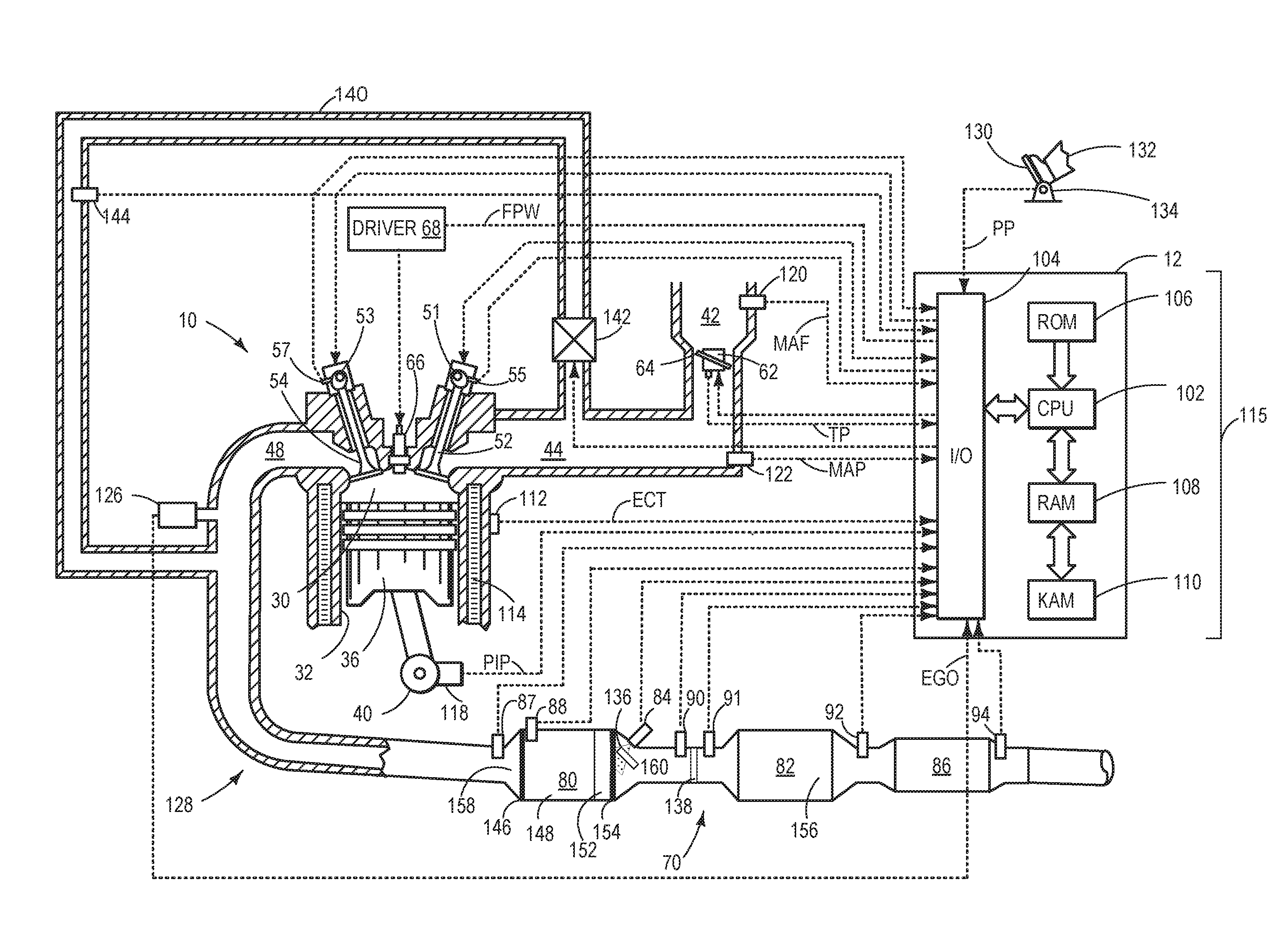Dual catalyst heating system
a heating system and catalyst technology, applied in the direction of machines/engines, separation processes, electric control, etc., can solve the problems of low conversion efficiency of scr catalyst, temperature-dependent scr reaction, and inability to work at low temperatures, so as to reduce the nitrogen oxide content of exhaust gas
- Summary
- Abstract
- Description
- Claims
- Application Information
AI Technical Summary
Benefits of technology
Problems solved by technology
Method used
Image
Examples
second embodiment
[0088]In a second embodiment, a method comprises an exhaust gas aftertreatment including following an engine start, switching on a first heat device coupled to an inlet of a first catalyst, the first catalyst arranged upstream of a second catalyst in an exhaust passage; and when an exhaust temperature reaches a first temperature threshold value, introducing, via a feed device, a reducing agent into the exhaust passage between the first and second catalyst; and switching on a second heat device coupled to an outlet of the first catalyst. In a first example of the method, the method further comprises wherein when the exhaust temperature reaches a second temperature threshold value, switching off the second heat device and continuing introduction of the reducing agent, wherein the second temperature threshold value is higher than the first temperature threshold value. A second example of the method optionally includes the first example, and further includes wherein the first heat devic...
third embodiment
[0089]In a third embodiment, a method comprises an engine exhaust including responsive to an engine cold-start condition, actuating a first heater coupled to an inlet of a first exhaust oxidation catalyst to raise an exhaust temperature, the first catalyst arranged upstream of a second selective reduction catalyst; and responsive to the exhaust temperature exceeding a first threshold, actuating a second heater coupled to an outlet of the first exhaust oxidation catalyst while injecting an amount of reducing agent, rearwards, onto the outlet of the first catalyst, a direction of the injecting opposite to the direction of exhaust flow. In a first example of the method, the method further comprises wherein while actuating the second heater, disabling the first heater. A second example of the method optionally includes the first example, and further includes wherein responsive to the exhaust temperature exceeding a second threshold, higher than the first threshold, disabling at least th...
PUM
| Property | Measurement | Unit |
|---|---|---|
| temperature | aaaaa | aaaaa |
| temperature | aaaaa | aaaaa |
| temperature threshold | aaaaa | aaaaa |
Abstract
Description
Claims
Application Information
 Login to View More
Login to View More - R&D
- Intellectual Property
- Life Sciences
- Materials
- Tech Scout
- Unparalleled Data Quality
- Higher Quality Content
- 60% Fewer Hallucinations
Browse by: Latest US Patents, China's latest patents, Technical Efficacy Thesaurus, Application Domain, Technology Topic, Popular Technical Reports.
© 2025 PatSnap. All rights reserved.Legal|Privacy policy|Modern Slavery Act Transparency Statement|Sitemap|About US| Contact US: help@patsnap.com



